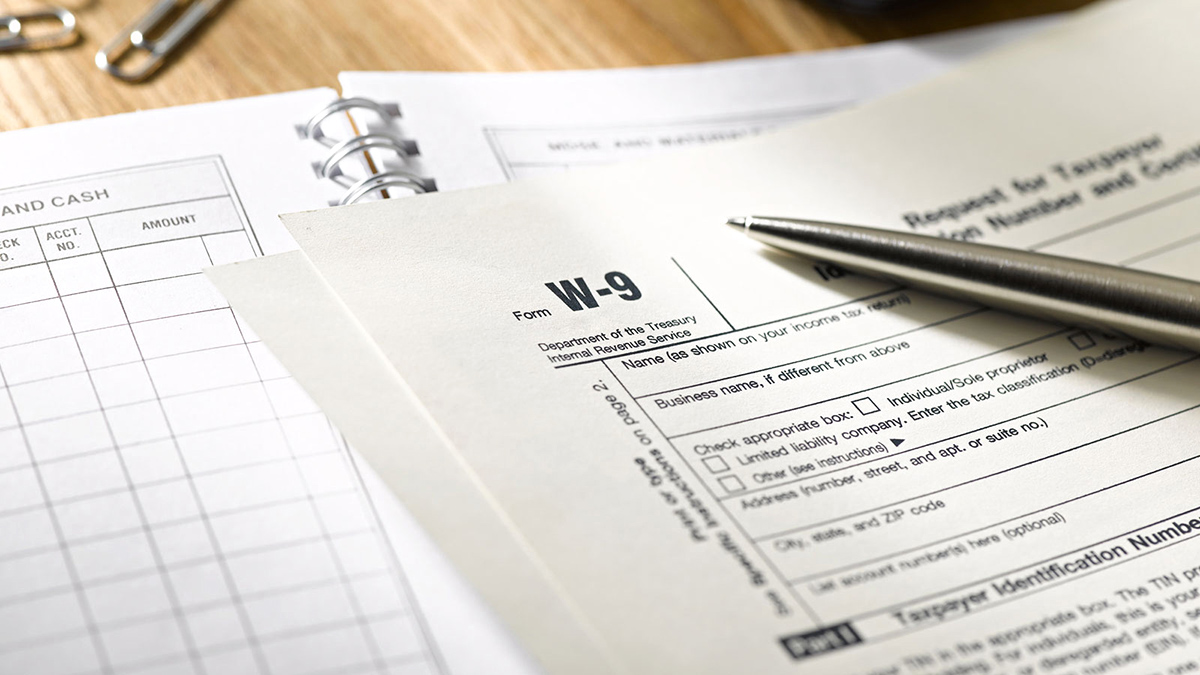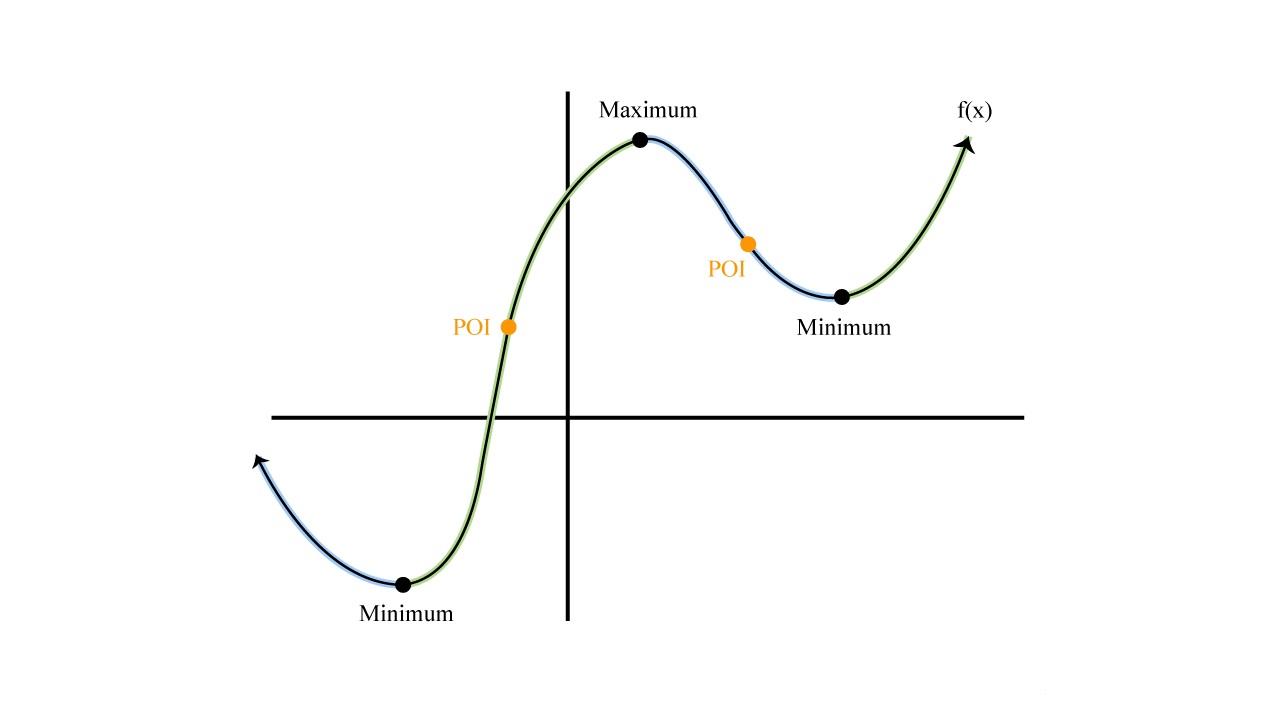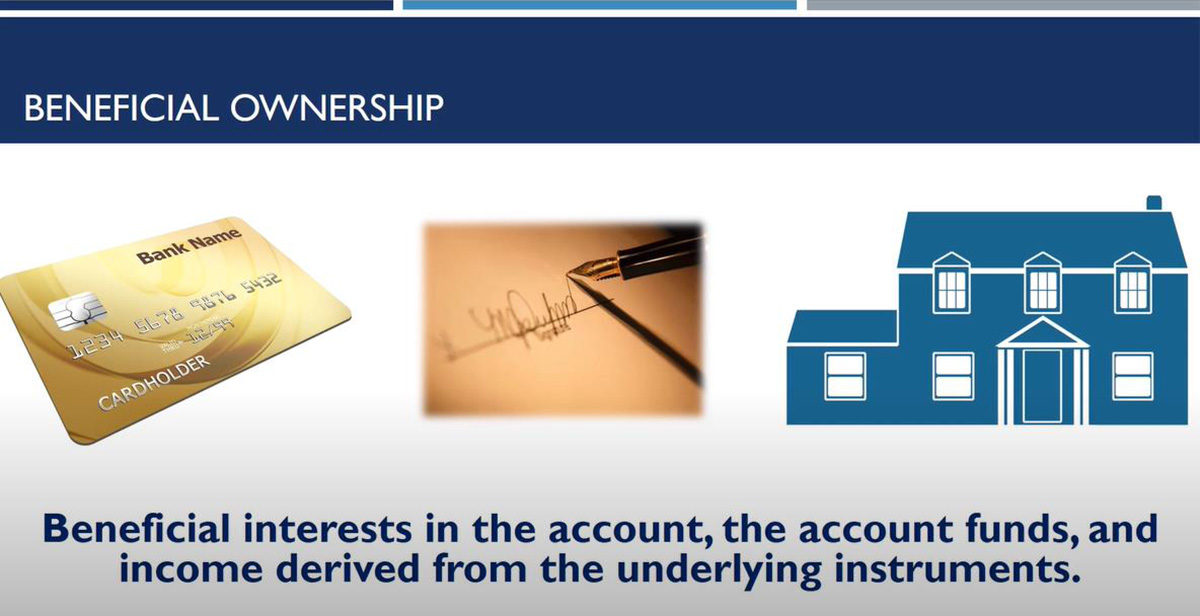

Finance
How To Lower Your Income Tax Bracket
Published: January 20, 2024
Learn practical strategies to reduce your income tax bracket and optimize your finances. Discover valuable tips and tricks on finance management.
(Many of the links in this article redirect to a specific reviewed product. Your purchase of these products through affiliate links helps to generate commission for LiveWell, at no extra cost. Learn more)
Table of Contents
- Introduction
- Understanding your income tax bracket
- Strategies to lower your income tax bracket
- Maximize your deductions and credits
- Contribute to retirement accounts
- Utilize tax-advantaged investment accounts
- Take advantage of tax credits and deductions for education expenses
- Consider shifting income between years
- Explore tax-exempt investments
- Conclusion
Introduction
When it comes to managing your personal finances, one of the key areas to focus on is your income tax bracket. Understanding your tax bracket can help you make informed decisions and potentially save money on your tax bill.
Your income tax bracket determines the percentage of your income that you owe in taxes. The tax brackets range from the lowest income levels, where you pay the least amount of taxes, to the highest income levels, where you pay the highest percentage of taxes. The tax brackets are set by the government and can change from year to year.
Lowering your income tax bracket means paying a lower percentage of your income in taxes and keeping more money in your pocket. While it may seem like a daunting task, there are strategies you can implement to reduce your tax liability and potentially move into a lower tax bracket.
In this article, we will explore some effective strategies that can help you lower your income tax bracket. By implementing these strategies, you can potentially save money and have more control over your financial future.
Understanding your income tax bracket
Before diving into strategies for lowering your income tax bracket, it’s important to have a solid understanding of how tax brackets work. Your income tax bracket is determined by your taxable income, which is your total income minus any deductions or credits you qualify for.
Tax brackets are progressive, meaning that as your income increases, so does the percentage of taxes you owe. The United States has a progressive tax system, with several tax brackets ranging from 10% to 37% as of 2021.
For example, let’s say you fall in the 22% tax bracket. This means that a portion of your income will be taxed at 10%, a portion at 12%, and a portion at 22%. Your tax bracket is based on your taxable income, not your gross income.
It’s important to note that moving into a higher tax bracket does not mean all your income is taxed at that higher rate. Only the portion of your income that falls within that specific tax bracket is subject to that rate. The remaining income is taxed at the lower rates of the previous brackets.
Understanding your tax bracket is crucial because it enables you to make informed decisions about your finances. By strategically managing your income and deductions, you can potentially reduce your taxable income and move into a lower tax bracket.
Next, let’s explore some effective strategies that can help you lower your income tax bracket and optimize your tax situation.
Strategies to lower your income tax bracket
Lowering your income tax bracket requires strategic financial planning and utilizing various tax-saving strategies. By implementing the following strategies, you can potentially reduce your tax liability and keep more of your hard-earned money:
- Maximize your deductions and credits: Deductions and credits are valuable tools to lower your taxable income. Take advantage of itemized deductions such as mortgage interest, property taxes, and medical expenses if they exceed the standard deduction. Additionally, investigate tax credits like the Earned Income Tax Credit or the Child and Dependent Care Credit to further reduce your tax burden.
- Contribute to retirement accounts: Contributing to retirement accounts not only helps you save for the future but can also provide immediate tax benefits. Contributions to traditional Individual Retirement Accounts (IRAs) or employer-sponsored retirement plans like 401(k)s are generally tax-deductible, reducing your taxable income for the year.
- Utilize tax-advantaged investment accounts: Explore investment options like Health Savings Accounts (HSAs) or Flexible Spending Accounts (FSAs) that offer tax advantages. HSAs, for instance, allow you to contribute pre-tax dollars that can be used to pay for qualified medical expenses, while FSAs offer similar benefits for childcare or certain healthcare expenses.
- Take advantage of tax credits and deductions for education expenses: If you or your dependents are pursuing higher education, be sure to investigate educational tax benefits. The American Opportunity Credit and the Lifetime Learning Credit can offer substantial tax credits, while deductions for student loan interest and tuition expenses can also help reduce your taxable income.
- Consider shifting income between years: In some cases, rearranging your income between tax years can help you stay within a lower tax bracket. Talk to a tax professional to explore options like deferring income to the next year or accelerating deductible expenses into the current year to optimize your tax situation.
- Explore tax-exempt investments: Certain investment opportunities, such as municipal bonds or tax-exempt mutual funds, offer tax advantages by providing income that is free from federal taxes. Investing in these tax-exempt securities can assist in lowering your taxable income.
Remember, implementing these strategies requires careful planning and consideration of your individual financial circumstances. Consulting with a tax advisor or financial planner can provide personalized guidance and ensure you’re maximizing your tax-saving opportunities.
By implementing these strategies and taking advantage of the various tax incentives available, you can potentially lower your income tax bracket and keep more of your hard-earned money.
Maximize your deductions and credits
One of the most effective ways to lower your income tax bracket is by maximizing your deductions and credits. Deductions and credits can significantly reduce your taxable income, resulting in a lower tax bill. Here are some key strategies to consider:
- Itemize your deductions: Many taxpayers opt for the standard deduction, but itemizing your deductions can often result in higher tax savings. Some common itemized deductions include mortgage interest, property taxes, state and local taxes, medical expenses, and charitable contributions. Keep thorough records so you can accurately claim these deductions on your tax return.
- Take advantage of tax credits: Tax credits directly reduce your tax liability on a dollar-for-dollar basis, making them a powerful tool for lowering your tax bracket. There are numerous credits available, such as the Child Tax Credit, the Earned Income Tax Credit, and the American Opportunity Credit for education expenses. Research and determine which credits you may qualify for and make sure to claim them on your tax return.
- Explore above-the-line deductions: Above-the-line deductions reduce your taxable income, even if you don’t itemize your deductions. These deductions, such as contributions to retirement accounts or health savings accounts, can be claimed regardless of whether you take the standard deduction or itemize. Taking advantage of above-the-line deductions can have a significant impact on lowering your taxable income.
- Keep track of eligible expenses: Certain expenses may be tax-deductible but often get overlooked. This includes out-of-pocket medical expenses, job-related expenses, and educational expenses. Keep detailed records of these costs and consult IRS guidelines to ensure you claim all eligible deductions. Additionally, consider using tax software or consulting with a tax professional to help identify and maximize your eligible deductions.
Remember, everyone’s tax situation is unique, so it’s crucial to evaluate your individual circumstances and consult with a tax advisor to ensure you’re maximizing your deductions and credits within the boundaries of the law.
By maximizing your deductions and credits, you can potentially lower your taxable income, move into a lower income tax bracket, and ultimately reduce your tax burden.
Contribute to retirement accounts
Contributing to retirement accounts is not only a smart financial move for your future, but it can also help lower your current income tax bracket. By making regular contributions to retirement accounts, you can reduce your taxable income and potentially move into a lower tax bracket. Here are some key points to consider:
- Traditional Individual Retirement Accounts (IRAs): Contributions to traditional IRAs are typically tax-deductible, meaning they reduce your taxable income for the year you make the contribution. The IRS sets contribution limits for IRAs each year, so be sure to stay within the allowed limits. Keep in mind that you will pay taxes on the withdrawals when you retire.
- Employer-sponsored retirement plans: Many employers offer retirement plans such as 401(k)s or 403(b)s, which allow you to contribute pre-tax income. By doing so, you lower your taxable income for the year and benefit from tax-deferred growth on your investments. Some employers also offer matching contributions, making your retirement savings even more valuable.
- Self-employed retirement plans: If you’re self-employed, take advantage of retirement plans designed for business owners, such as a Simplified Employee Pension (SEP) or a Solo 401(k). These plans offer higher contribution limits than traditional IRAs and can provide significant tax advantages.
- Roth IRA conversions: If you have a traditional IRA, consider converting it to a Roth IRA. Although you’ll have to pay taxes on the converted amount, once the conversion is complete, future withdrawals from the Roth IRA are tax-free. This can be especially beneficial if you expect your income tax bracket to be higher in retirement.
By contributing to retirement accounts, you reduce your taxable income in the current year, potentially moving into a lower tax bracket. Additionally, these contributions help you build a nest egg for the future, ensuring financial security during your retirement years.
Keep in mind that retirement accounts are subject to specific rules and regulations. Consult with a financial advisor or tax professional to understand the eligibility criteria, contribution limits, and tax implications of each retirement account option available to you.
Remember, contributing to retirement accounts is a long-term strategy that not only provides tax benefits but also helps secure your financial future. Take advantage of these opportunities to lower your income tax bracket and build a solid foundation for your retirement savings.
Utilize tax-advantaged investment accounts
In addition to contributing to retirement accounts, utilizing tax-advantaged investment accounts can further help you lower your income tax bracket. These accounts offer tax benefits that can enhance your overall financial strategy. Here are some key tax-advantaged investment accounts to consider:
- Health Savings Accounts (HSAs): HSAs are available to individuals enrolled in high-deductible health insurance plans. Contributions to HSAs are tax-deductible, and withdrawals for qualified medical expenses are tax-free. HSAs offer a triple tax advantage, as contributions, earnings, and withdrawals are all tax-free when used for eligible healthcare expenses.
- Flexible Spending Accounts (FSAs): FSAs are offered by employers and allow you to set aside pre-tax dollars to cover eligible medical, dental, and vision expenses. By using an FSA, you reduce your taxable income because your contributions are made with pre-tax dollars.
- 529 College Savings Plans: For parents or individuals saving for education expenses, 529 plans offer a tax-advantaged way to invest in education costs. Contributions to a 529 plan grow tax-free, and withdrawals for qualified education expenses are also tax-free. Some states offer additional tax incentives for contributing to their state-sponsored 529 plans.
- Investment in tax-exempt municipal bonds: Municipal bonds are issued by state and local governments to finance public projects. The interest income from these bonds is generally tax-exempt at the federal level and sometimes at the state level, making them an attractive option for tax-conscious investors.
By taking advantage of these tax-advantaged investment accounts, you can potentially reduce your taxable income and lower your income tax bracket. It’s important to consider your specific financial goals and consult with a financial advisor to determine which accounts align with your needs.
Keep in mind that these accounts come with specific rules and limitations. It’s essential to understand the contribution limits, eligible expenses, and any applicable penalties or restrictions associated with each account.
By strategically utilizing tax-advantaged investment accounts, you can optimize your tax situation, minimize your tax liability, and allocate more of your hard-earned money towards achieving your financial goals.
Take advantage of tax credits and deductions for education expenses
Education expenses can be a significant financial burden, but they also present opportunities for tax savings. By understanding and utilizing tax credits and deductions for education expenses, you can potentially lower your income tax bracket. Here are some key points to consider:
- American Opportunity Credit: The American Opportunity Credit is a tax credit available to eligible students pursuing higher education. This credit can provide a substantial tax benefit, allowing you to offset a portion of qualified education expenses, such as tuition, fees, and course materials. The credit is partially refundable, meaning you can receive a refund even if you don’t owe any taxes.
- Lifetime Learning Credit: The Lifetime Learning Credit is another tax credit available to individuals, including those pursuing higher education or acquiring new skills. Unlike the American Opportunity Credit, the Lifetime Learning Credit is non-refundable, meaning it can only reduce your tax liability but cannot result in a refund. This credit applies to tuition and fees, as well as certain education-related expenses.
- Student Loan Interest Deduction: If you have student loans, you may be eligible to deduct the interest paid on those loans. This deduction allows you to reduce your taxable income by up to $2,500 per year. Certain income limitations and other criteria apply, so be sure to review the IRS guidelines to determine if you qualify for this deduction.
- Tuition and Fees Deduction: Although the Tuition and Fees Deduction expired at the end of 2020, it’s worth mentioning as it may be renewed by lawmakers in the future. This deduction allows you to deduct qualified tuition and fees for yourself, your spouse, or your dependents. Keep an eye on changes to tax laws to see if this deduction becomes available again.
By taking advantage of these tax credits and deductions, you can lower your taxable income and potentially move into a lower income tax bracket. It’s essential to keep detailed records and retain receipts for education-related expenses to substantiate your claims on your tax return.
Additionally, be aware of any income limitations, eligibility criteria, and expiration dates associated with each tax credit or deduction. Consulting with a tax professional or utilizing tax software can help ensure you fully understand and optimize the available education-related tax benefits.
By maximizing tax credits and deductions for education expenses, you can alleviate some of the financial strain associated with pursuing higher education and reduce your overall tax burden.
Consider shifting income between years
Shifting income between tax years is a strategic approach that can help you optimize your tax situation and potentially lower your income tax bracket. By carefully timing the recognition of income and deductions, you can take advantage of lower tax rates in certain years. Here are some key considerations:
- Deferring income: If you have control over the timing of receiving income, you may consider deferring it to the following year. By postponing the receipt of income, you can potentially keep your taxable income lower in the current year, resulting in a lower income tax bracket and reduced tax liability.
- Accelerating deductions: On the other hand, you can accelerate the payment of deductible expenses into the current tax year to reduce your taxable income. This can include making an extra mortgage payment, paying property taxes in advance, or making additional charitable contributions. By accelerating these deductions, you can potentially lower your income tax bracket and benefit from more significant tax savings.
- Bunching deductions: Bunching deductions involves consolidating your deductible expenses into one tax year to surpass the standard deduction threshold and itemize your deductions. For example, instead of making annual charitable contributions, you can make them every other year or make double contributions in a single year. This allows you to maximize your itemized deductions in specific years and potentially lower your tax bracket.
- Timing investment gains and losses: If you have investments, you can strategically time the realization of gains and losses to optimize your tax situation. For example, if you anticipate being in a lower tax bracket in the current year, you can realize capital gains by selling investments. Conversely, if you expect to be in a higher tax bracket, you can offset capital gains with capital losses to minimize your taxable income.
It’s important to note that shifting income should be done carefully and within the boundaries of tax laws. Working with a tax professional can help you navigate these strategies and ensure compliance with the tax code.
Consider your individual financial circumstances and future income projections when implementing income shifting strategies. While these approaches can provide tax advantages, they should align with your overall financial goals and not solely focus on reducing your current tax burden.
By strategically shifting income between tax years, you can effectively manage your taxable income, potentially lower your income tax bracket, and optimize your overall tax situation.
Explore tax-exempt investments
Investing in tax-exempt investments can be a valuable strategy to lower your income tax bracket and minimize your tax liability. Tax-exempt investments are vehicles that generate income that is typically not subject to federal or state income taxes. Here are some tax-exempt investment options to consider:
- Municipal bonds: Municipal bonds, also known as “munis,” are issued by state and local governments to fund public projects such as schools, roads, and utilities. The interest income from municipal bonds is generally exempt from federal income tax, and if you invest in bonds issued by your state of residence, they may also be exempt from state income tax. Municipal bonds can provide a steady income stream and potentially help lower your taxable income.
- Tax-exempt mutual funds: Tax-exempt mutual funds invest in a diversified portfolio of municipal bonds. These funds pool money from multiple investors and provide exposure to various municipal bonds, offering diversification and professional management. Investing in tax-exempt mutual funds can provide you with tax advantages while still offering the potential for capital appreciation.
- Health Savings Accounts (HSAs): HSAs not only serve as a tax-advantaged tool for healthcare expenses but also offer the potential for investment growth. Contributions to HSAs are tax-deductible, and withdrawals for qualified medical expenses are tax-free. By investing the funds within an HSA, you can potentially grow your investments tax-free, further lowering your tax liability.
When considering tax-exempt investments, it’s important to assess your risk tolerance, investment goals, and time horizon. Municipal bonds and tax-exempt mutual funds, like any investment, carry risk, including the risk of default or interest rate changes. Consulting with a financial advisor can help you evaluate the suitability of these investments based on your individual circumstances.
It’s worth noting that while tax-exempt investments offer tax advantages, they may have lower yields compared to taxable investments. It’s important to analyze the after-tax return potential and understand the overall impact on your financial goals before making investment decisions.
By exploring tax-exempt investments, you can potentially earn income that is not subject to federal or state income taxes, lower your taxable income, and ultimately lower your income tax bracket.
Conclusion
Lowering your income tax bracket is a goal that many individuals strive for to reduce their tax burden and keep more of their hard-earned money. By implementing strategic financial planning and utilizing various tax-saving strategies, you can potentially achieve this goal. Here is a summary of the strategies discussed in this article:
- Maximize your deductions and credits to lower your taxable income. Explore itemized deductions, tax credits, and above-the-line deductions to optimize your tax savings.
- Contribute to retirement accounts such as traditional IRAs, employer-sponsored plans, and self-employed retirement plans. These contributions can lower your taxable income and offer long-term financial benefits.
- Utilize tax-advantaged investment accounts like HSAs, FSAs, 529 plans, and tax-exempt municipal bonds to reduce your tax liability and potentially earn tax-free income.
- Take advantage of tax credits and deductions for education expenses through credits like the American Opportunity Credit and the Lifetime Learning Credit, as well as deductions for student loan interest and tuition expenses.
- Consider shifting income between years by deferring income, accelerating deductions, bunching deductions, or timing investment gains and losses to strategically lower your taxable income.
- Explore tax-exempt investments like municipal bonds and tax-exempt mutual funds to potentially earn income that is not subject to federal or state income taxes.
Remember, everyone’s financial situation is unique, so it’s important to assess which strategies align with your specific circumstances. Consulting with a tax professional or financial advisor can help you navigate the complexities of the tax code and develop a personalized tax strategy.
By implementing these strategies, you can optimize your tax situation, potentially lower your income tax bracket, and keep more of your money for the things that matter most to you. Take control of your finances and make informed decisions to achieve your financial goals while minimizing your tax liability.














